So much was fantastic about this session: from sweeping ideas, such as the importance of broadening our frames, to specific resources such as artwork, and most importantly the ability to connect with a great community of educators.
Learning about how Joan Tarika Lewis, the first female member of the BPP and a high school student, came into a meeting and demanded that women be a part of the Black Panther Party is something I will definitely use in my classroom. It’s a great entry point for the importance and impact of community involvement.
These are just two comments from the more than 300 educators and students who participated in the People’s Historians Online mini-class on Women in the Black Panther Party with presenters Robyn C. Spencer and Mary Phillips on May 8, 2020. The session was introduced by Jesse Hagopian, who co-wrote a lesson on the Black Panther Party at the Zinn Education Project website.
Video
Here is a video of the full event, except the breakout sessions.
Read transcribed excerpts further below.
Audio
Listen to the recording of the session on these additional platforms.
Excerpts
02:56-03:58, Mary Phillips: I want to begin our conversation by talking about when women joined the Black Panther Party and why they joined. There were many Black Panther groups inspired by the Lowndes County freedom organization; many people are probably familiar with their organization and their symbol of the Black Panther. In 1966, in Oakland, California, Huey P. Newton and Bobby Seale founded the Black Panther Party. Women joined a year later in the spring of 1967. The first woman to join the Black Panther Party was actually a young teenage girl named Tarika Lewis. She was a student activist in her high school. She was very adamant in advocating for a black history club at her high school and when she came to the Black Panther Party headquarters, she actually demanded to join the organization and pointed out the lack of women that were part of the organization at that time and so her presence opened the door for others to join.
8:00-08:32, Robyn Spencer: The arts were one of the ways that the Panthers really delivered their political message. Their newspaper the Black Panther created in 1967 grew to be one of the most popular alternative newspapers. It really delivered their message around the country and around the world and they use the pages of their newspaper as a canvas. It’s important to note that the women served as graphic artists creating these images.
16:34-16:51, video: “Dear Huey, When I joined the party, I was thrilled about becoming part of an organization that believes in the equality of men and women. It bothers me that there are brothers who still view women as sexual objects. We should have no men in the Black Panther Party who feel this way or women for that matter.”
16:56-17:06, video: “One of the ironies of the Black Panther Party is that the images of the Black male with the jacket of a gun but the reality is the majority of the rank-and-file members by the end of the 60s are women.
26:06-26:26, Mary: I don’t know how many people are familiar with the fact that the Black Panther Party did have their own school, the Oakland Community School. It was their last community survival program. It was an elementary level institution. It became you know like I said it is the Panthers’ longest-running Community Survival program.
27:32-28:49, Mary: What I love about the Oakland community school is how they embrace this idea of whole-body education. So that’s when they take it to a complementary level — the physical, the emotional, the abstract, the creative intelligence. So, they really try to fulfill all of these needs all of the different aspects of the young child. They also integrated restorative justice. They had a Justice Board which was run by a small youth committee and these young children would address any kind of harm or concerns on their own and come up with a mutual or group agreement. So, they learn how to take accountability, community building initiatives, how to work through their differences which is critical and they would do this with no adults in a room. And so, they was given the skills to do this and they were committed you know when we talk about restorative justice it works in a way with no one is shunned no one is stigmatized as opposed to our criminal justice system would that happens and so students learn valuable life skills they listened attentively they problem solved.
32:46-34:20, Robyn: There’s so many ways that we can think about reentering the types of violence that activists face in the 1960s as they fought for their rights and I think about ways in which we connect the Panthers to that legacy and instead of positioning them as so outside of the path but thinking about them as within that same tradition right. And when we think about women in the Panthers, we have to think about women like Gloria Richardson, women who were part of the Student Nonviolent Coordinating Committee, women who stood up in all of these movements of the 1960s who were influenced by the radical women who were coming out of the Vietnamese struggle, who were coming out of the Algerian struggle, who were part of a global upsurge of a new way of thinking about women’s radicalism at the time. So, what was happening with the Panthers was not something that was unique and unprecedented, right, it was part of larger political and historical cross currents and in this way we can say that when we learn about the Panthers, we’re learning about US history, we’re learning about global history, we’re learning about all of those standards, right, that would that people like to put together that oftentimes decenter black and brown people but in a lot of ways if we sort of recontextualize them, it’s important to think about that.
39:07-40:59, Robyn: What does it mean to not be a person whose name might say and everyone recognizes, but to be going through that level of repression? What did it mean to be a rank-and-file member, a woman in the Black Panther Party and be dealing with the daily surveillance? How did that impact your life, your activism, etc. etc.? These are the questions that we need to ask and these are the ways that we need to think about accountability and telling this history and learning this story right because it wasn’t. We know the stories the flashpoints, right, the moments where male leaders were arrested, and they’ve made headlines or people were assassinated in brutal ways and it’s left the scar on history that maybe no one can ignore even though they try. But we don’t know to think of the daily grinding down, the ways in which that . . . surveillance and repression really eroded the foundations of these movements in ways that push them into or try to push them into oblivion. So, telling that part of the story is also central, right, so in women and repression, women and motherhood, women in ideology, women in art, women in poetry, right, women and educational philosophy, women and nutrition, ideas about nutrition and parenting, right, all of these were discussed and central in the history of the Black Panther Party; all of these were radical ideas but we don’t tend to think about that. When we think about the Black Panther Party, we have one narrow frame. What about if we broaden that, then we’d really have a sense of what revolution looked like and the revolution that they were interested in making anyway.
Resources
Here are many of the resources recommended by the presenters and also by participants in the chat box.
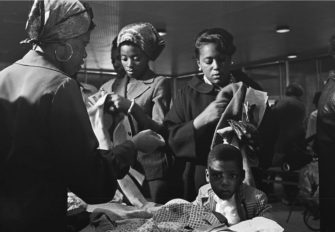 |
LessonsTeaching the Panther 10 Point Program and Platform by Wayne Au What We Don’t Learn About the Black Panther Party — but Should by Jesse Hagopian and Adam Sanchez COINTELPRO: Teaching the FBI’s War on the Black Freedom Movement by Ursula Wolfe-Rocca |
|
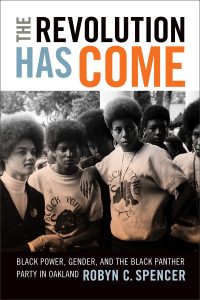 |
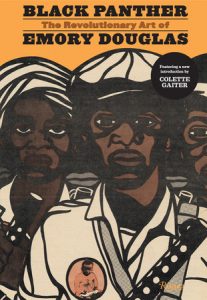 |
BooksThe Revolution Has Come: Black Power, Gender, and the Black Panther Party in Oakland by Robyn Spencer Black Panther: The Revolutionary Art of Emory Douglas by Emory Douglas, edited by Sam Durant, foreword by Danny Glover, preface by Bobby Seale, contribution by Kathleen Cleaver |
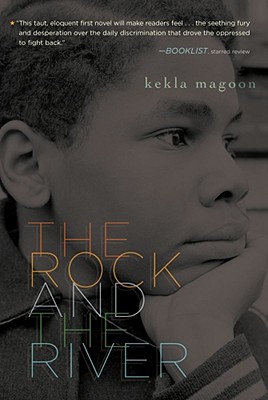 |
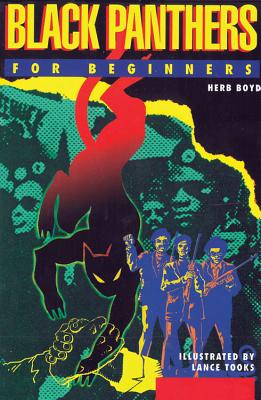 |
Books on the Black Panther Party and Black Power were recommended in the chat box. Those titles and more are included in a list on the Black Panther Party at Social Justice Books. Note that there are only a handful of books for children and young adults. Students and educators can advocate that publishers fill this gap. |
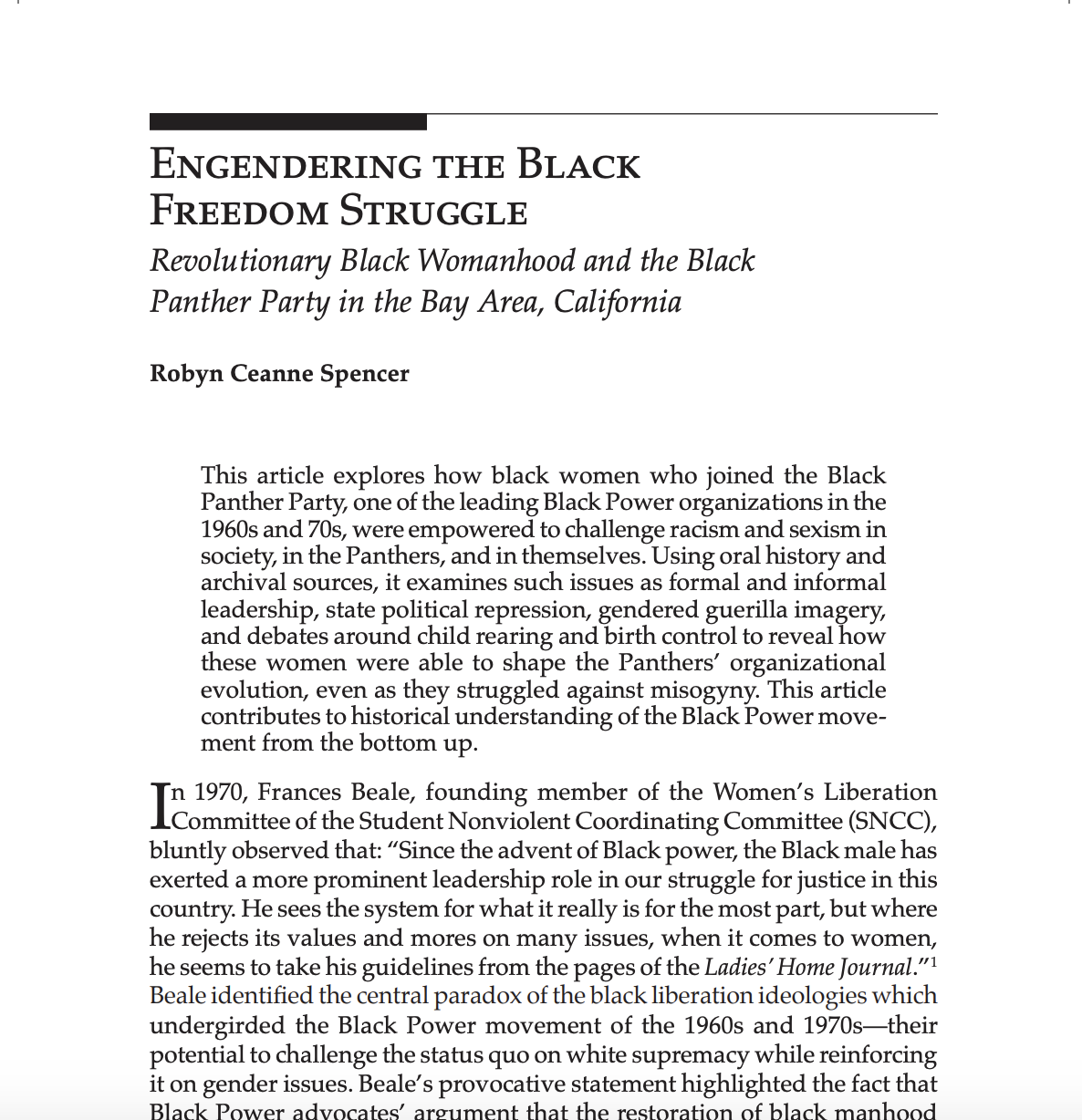 |
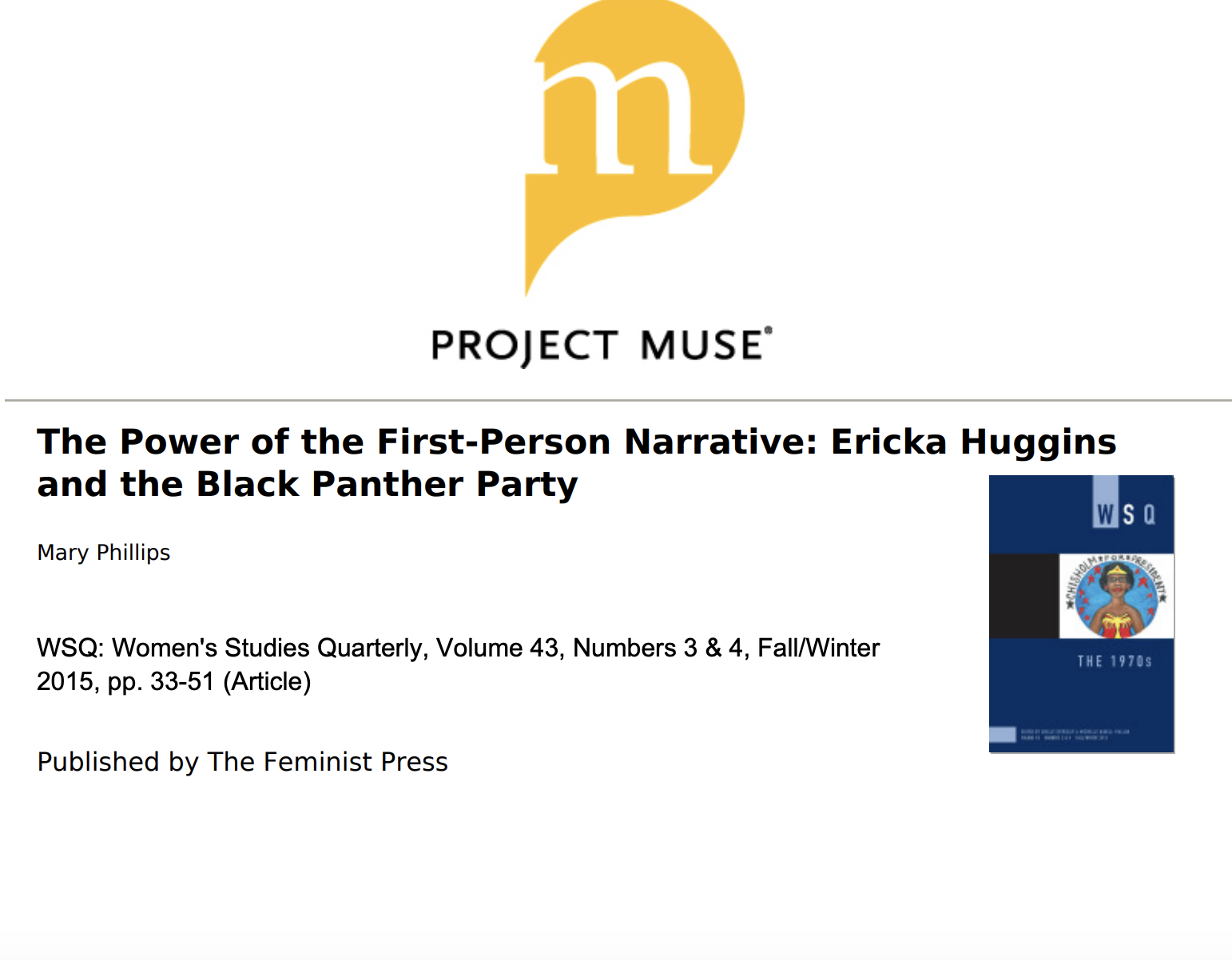 |
Articles“Engendering the Black Freedom Struggle: Revolutionary Black Womanhood and the Black Panther Party in the Bay Area, California” by Robyn C. Spencer (Journal of Women’s History, 2008) “The Power of the First-Person Narrative: Ericka Huggins and the Black Panther Party” by Mary Frances Phillips (Women’s Studies Quarterly, 2015) |
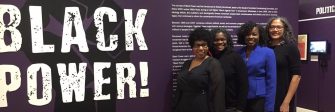 |
Digital and Oral History CollectionsThe Freedom Archives Over 12,000 hours of audio and video recordings which date from the late-1960s to the mid-90s and chronicle the progressive history of the Bay Area, the United States, and international movements. Intersectional Black Panther Party History Project includes IPHP Resource Guide for Teaching Black Panther Party History National Archives, Black Power Catalog Black Power movement of the 1960s and 1970s, including records on various organizations such as the Nation of Islam (NOI), Deacons for Defense and Justice, and the Black Panther Party for Self-Defense (BPP); and on several individuals, including Malcolm X, Stokely Carmichael, Elaine Brown, Angela Davis, Fred Hampton, Amiri Baraka, and Shirley Chisholm. Seattle Civil Rights and Labor History Project. Veterans of the Black Panther Party, Seattle chapter, discuss their experiences in video interviews. |
|
Film Clips
Alicia Garza and Ericka Huggins in Conversation
Oakland Community Learning Center: a television program in two segments that focus on the Oakland Community Learning Center, a project founded by the Oakland chapter of the Black Panther Party.
More Films
Black Panthers Video Playlist. Produced by the Oakland Museum of California, these 15 short video clips are ideal for the classroom. Mary Phillips noted: “The first clip featuring the poem by Chinaka Hodge is a great tribute to Panthers such as Emory Douglas, Tarika Lewis, and fallen Panthers like Bobby Hutton. Teachers can also connect her poem to the 10-Point Program and Platform and the Party’s political ideology. In the second clip, students can hear Tarika in her own words and the perspective of men across ranks on gender politics, which we don’t hear often.”
The Black Power Mixtape 1967-1975. A documentary that examines the evolution of the Black Power movement in U.S. society from 1967 to 1975 as viewed through Swedish journalists and filmmakers
Crip Camp. In this 2020 documentary about the disability rights movement, there is a scene of the Black Panther Party feeding demonstrators in San Francisco.
Eyes on the Prize. Includes segments on the Black Panther Party in “Power” and “A Nation of Law.”
Images
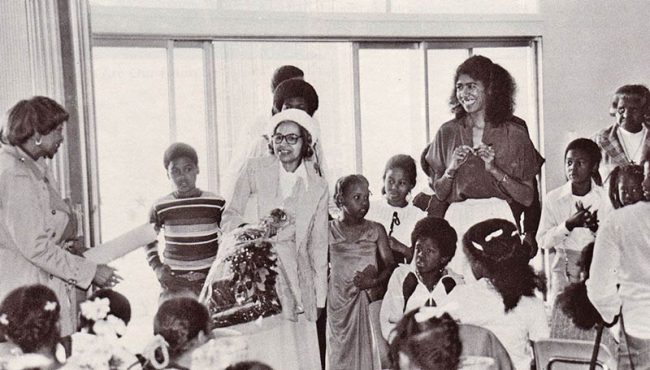
During the 1979–1980 school year, Mrs. Parks visited the Oakland Community School (OCS), an elementary school run by the Black Panther Party. Educator and Black Panther Party leader Ericka Huggins is the woman standing among the children. Photo by Donald Cunningham. Source: Ericka Huggins and Lisbet Tellefsen
Participant Reflections
Here are some of the responses from participants in the session evaluation.
What was learned.
The whole topic. The BPP was never really talked about and I never asked questions growing up, but I never fully realized the impact of the amazing work done by women.
De-constructing the Martin/Malcolm dichotomy, centering women and gender in the history of the Panthers.
I learned about the artwork created by black women in the Panthers and intend to use those for primary source analysis activities in class.
Black women are the spine and backbone of the Black Panther Party, and we are presented a distorted version of US history when it comes to the BPP to begin with . . . add on top of that the distortion of the role of women in the BPP, and we need to do a much better job pushing back against the status quo.
Huey Newton’s support of LGBT and feminist issues. This narrative is not often a part of the main story and it’s important to center the intersectional experiences of activist and party members. There are no singular experiences.
Women made up a majority of the party by the end of the 60’s. It made me realize I hadn’t made as much of a move from big man history as I thought. The fact that the first woman to join was a teenager is of importance, as well.
Learning that there was an art aspect to this whole movement, I had no idea how powerful of an idea it conveyed.
Highlighting of women warriors of the Black Panther Party. I want to share this information with teachers of this content in my school and find ways to bring it into a math curriculum.
I enjoyed the visuals that were shared and analyzed. These types of graphics are so critical for students in addition to the written documents and documentaries like “Vanguard of the Revolution.” The pieces written by Drs. Phillips and Spencer are insightful and contribute much to the historiography as well. I’ve used Mary Phillips’ work in teaching my own university classes but I will have to integrate Spencer’s, as well.
I am very excited to learn even more about the Oakland Community School. Their work and their principles can guide us as we work to really reimagine school (not Gates’ reimagine school).
Phew — can’t list just one. The presenters were great and LOVED their passion. The shared resources in the chat were very valuable. My “surprise” was the letter from Huey P. Newton supporting gay rights. Love that crossover and went and found docs to help teach it.
There is so much I didn’t know I didn’t know. I definitely fall into the camp who heard about it as a negative thing that maybe shouldn’t even be discussed, so I am humbled and looking forward to learning more.
I didn’t know the level of women involvement in the Black Panthers. I also was interested in how they challenged gender roles. I also was fascinated by their community schools and would love to learn more.
So much! I definitely want to use the documents they shared. I love the idea of centering a lesson around expanding ideas of revolution, starting with the “survival pending revolution” strategy and looking at programs like the health clinics that were discussed at the end. I also loved putting this in a broader perspective thinking about how these women were connected to other national and global movements.
I was really thrilled to learn more about the gender roles and the disruption of the blanket narratives surrounding women’s expectations.
Instead of thinking about leaders like Malcolm X and MLK as opposing ideas, thinking about a more holistic, central history . . . examining each leader as their individual ideas. I never thought about how much got left out when looking at history that way. I can’t wait to revisit the concepts in a broader fashion.
Oh my! As usual from these sessions, too many things from which to choose! I think the best take away was Robyn Spencer’s cogent reasoning for why teaching BPP is important to curriculum particularly because the organization itself is such a touchstone on so many issues in the later 1960s into 1970s, especially (but beyond as well). What a wonderful centering point to explore that particular time period in US history and have link to international movements as well and legacies further into 20th century and today.
It is so powerful to hear from both Mary and Robyn about their experiences. Narratives really ground the power of learning history and I am routinely moved when I get to hear first hand accounts. I am also struck by how we treat the Black Panther Party in history, but then rely so heavily on the tools of organizing to get us out of a crisis. Mutual Aid is truly what is serving my DC community right now and there can be no clearer connection to what the Black Panther Party taught us. Such a powerful force in organizing even years later.
The format.
The break out rooms were great to allow yourself to internalize and question information.
I thought the full setup worked, especially given the (excitingly!) high number of participants. My only wish is that we had more time in breakout rooms, but that’s just nitpicking.
The slightly longer breakout group time was excellent!
Thank you! This was a wonderfully organized program. I think this was my favorite one so far.
Size of breakout group was great. Wish we had 5-10 more minutes in our groups.
The breakout session is hit or miss. It all depends on who is in the meeting. Today, it was not a lot of value to miss 12 minutes of missing the speakers.
I enjoyed the breakout session very much. I thought it struck a good balance between the large group/lecturing mode and then being able to discuss ideas with a smaller group and to connect with a diverse group of educators, parents, students, etc.
I loved the breakout conversation, it really set the purpose for attending and re-instilled the importance of connection.
I think this was one of the smoothest professional development sessions I’ve been to. The size of the breakout rooms were great and no technical difficulties!
I love the order — presentation, small group, and then all-group Q&A.
I think it worked really well. I think they did a great job answering the questions and the presenters worked really well together. We didn’t have a facilitator so it was a little difficult at first but once we got going it was great.
WOW! This was such an awesome format. I was really apprehensive to engage in breakout group because I’m pretty shy but it was phenomenal. The people I was placed with cared about the content, engaged in meaningful discussion, and shared resources that are so valuable for me as a high school teacher. Also, I have attended a few educational opportunities during COVID-19 and this was the best yet. Content was shared in an engaging way and the discussion was so rich. Thank you!
This was beautiful today… Robin & Mary’s talks were so interactive with so many references to resources we can use in the classroom… directly applicable to K – 12 learning.
Loved looking at documents together. I thought the breakout groups were a good idea. The timing was right. I’m really impressed with you all!!! Can you teach everyone else how to do PD, especially virtual ones?
Given the expertise of the members of my breakout session, I could have spent hours with those women sharing their wealth of historical and personal knowledge and wisdom.
Format was perfect. Loved the mix of talking, art, and Q and A portion. My favorite part was breakout groups. Would love more time in breakout groups but it’s understandable for the session overall to fly by so fast.
Additional comments.
Huge thanks for a great talk and for the Zinn “curriculum” that has guided me all throughout my 1st year as a US history teacher!
Thank you. This was awesome!! I definitely am leaving with knowledge I didn’t have and can use in the classroom. How to connect the BPP to the traditional history standards was also helpful for those of us in . . .”traditional” environments.
Thank you! You are doing an amazing job. We are all becoming better teachers thanks to you!
Thank you for your time, expertise, grace, wisdom. I loved having young people in the conversations.
This was so powerful, I was deeply moved by the leadership and sharing of Dr. Kelly and Dr. Phillips today. Thank you. Thank you, also, for inviting me to participate as a facilitator of one of the breakout sessions. Humbled to be facilitating a group with amazing scholars/writers/authors/activists!
Great session. Love Miles’ quarantine rap.
Thank you. Our whole family appreciated this session!
Thank you so much!! This was a really great way to spend time learning in a collaborative and informative moment. With all the stress of the world right now, I really needed this to lift my spirits.
Being able to hear other perspectives about these topics and interact with other teachers opened my eyes and my mind. I can’t believe I’m just now coming across this resource! I’m so grateful that I did, and I can’t wait to be more involved! THANK YOU!!
The follow up emails are so helpful and chock full of information. THANKS for those, too!
Presenters
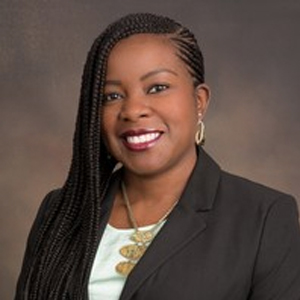 |
Robyn C. Spencer is a historian who focuses on Black social protest after World War II, urban and working-class radicalism, and gender. In 2018-2019 she was Women’s and Gender Studies Visiting Endowed Chair at Brooklyn College, CUNY and she is currently an Associate Professor of History at Lehman College. She is the author of The Revolution Has Come: Black Power, Gender, and the Black Panther Party in Oakland and is working on two book projects. To Build the World Anew: Black Liberation Politics and the Movement Against the Vietnam War explores how and why the anti-imperialist struggle for Vietnamese independence became a rallying point for U.S.-based Black activists who were part of the freedom movement of the 1950s–1970s. She has also begun research on a biography of Angela Davis. @racewomanist. |
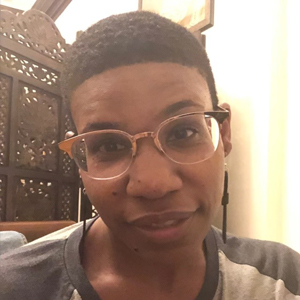 |
Mary Phillips is a proud native of Detroit, Michigan. She works as an Assistant Professor in the Department of Africana Studies at Lehman College, City University of New York. She was selected as a 2018-2019 award recipient for the American Association of University Women American Postdoctoral Research Leave Fellowship. Her interdisciplinary research agenda focuses on race and gender in post-1945 social movements. Currently she is working on her book manuscript, Sister Love: Ericka Huggins, Spiritual Activism, and the Black Panther Party (New York University Press). This project is the first and only scholarly monograph on the experiences of former Black Panther Party member and human rights activist Ericka Huggins. @mfphillips |

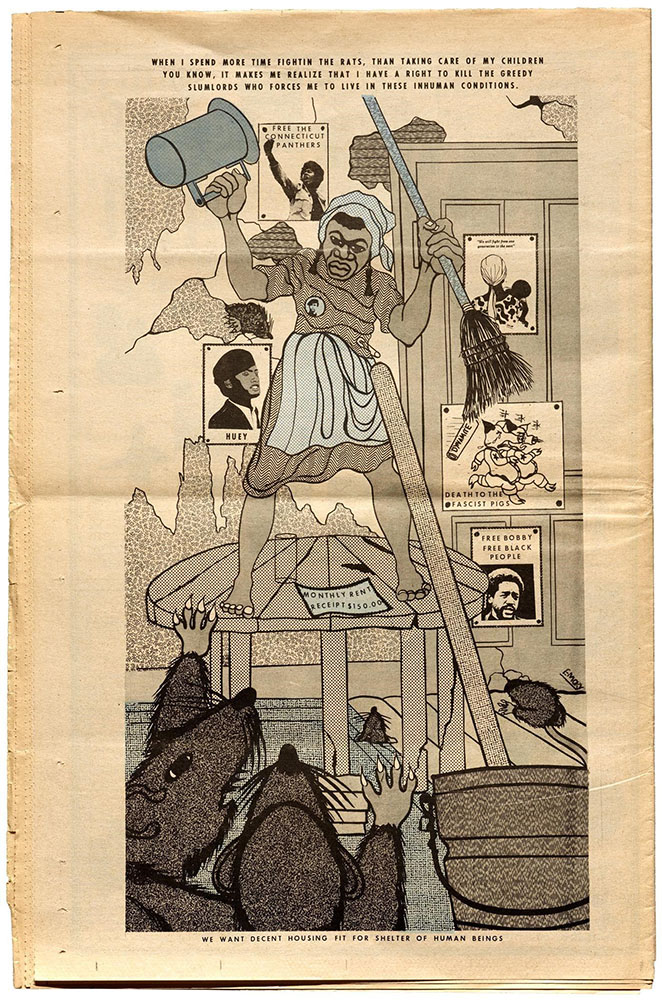
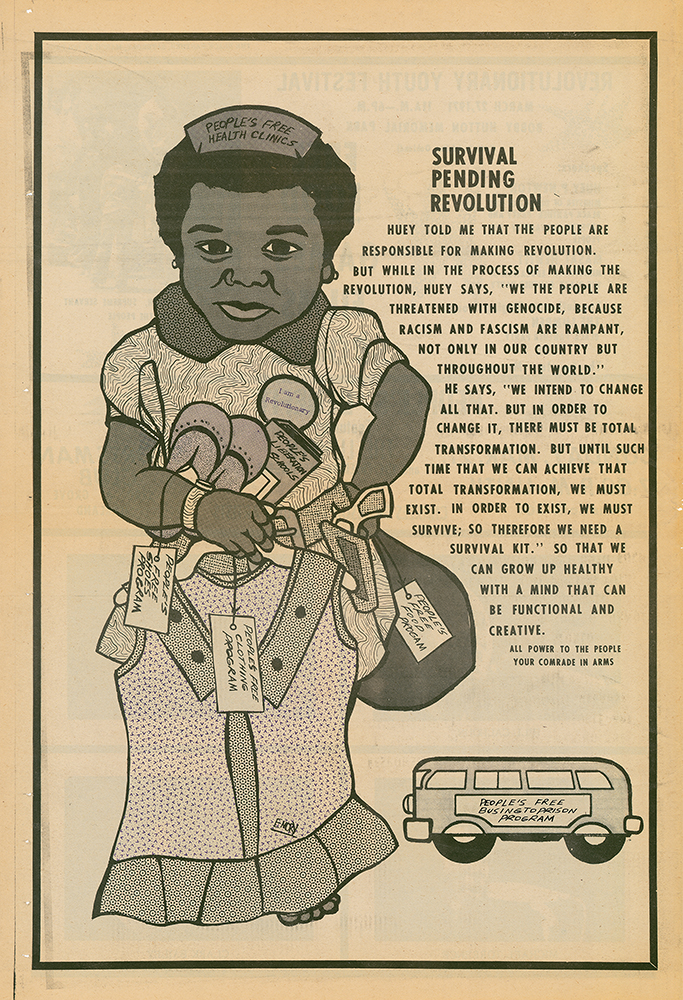
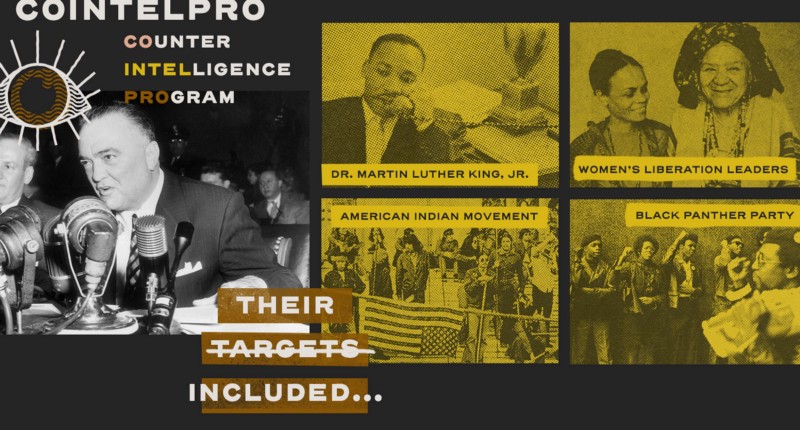
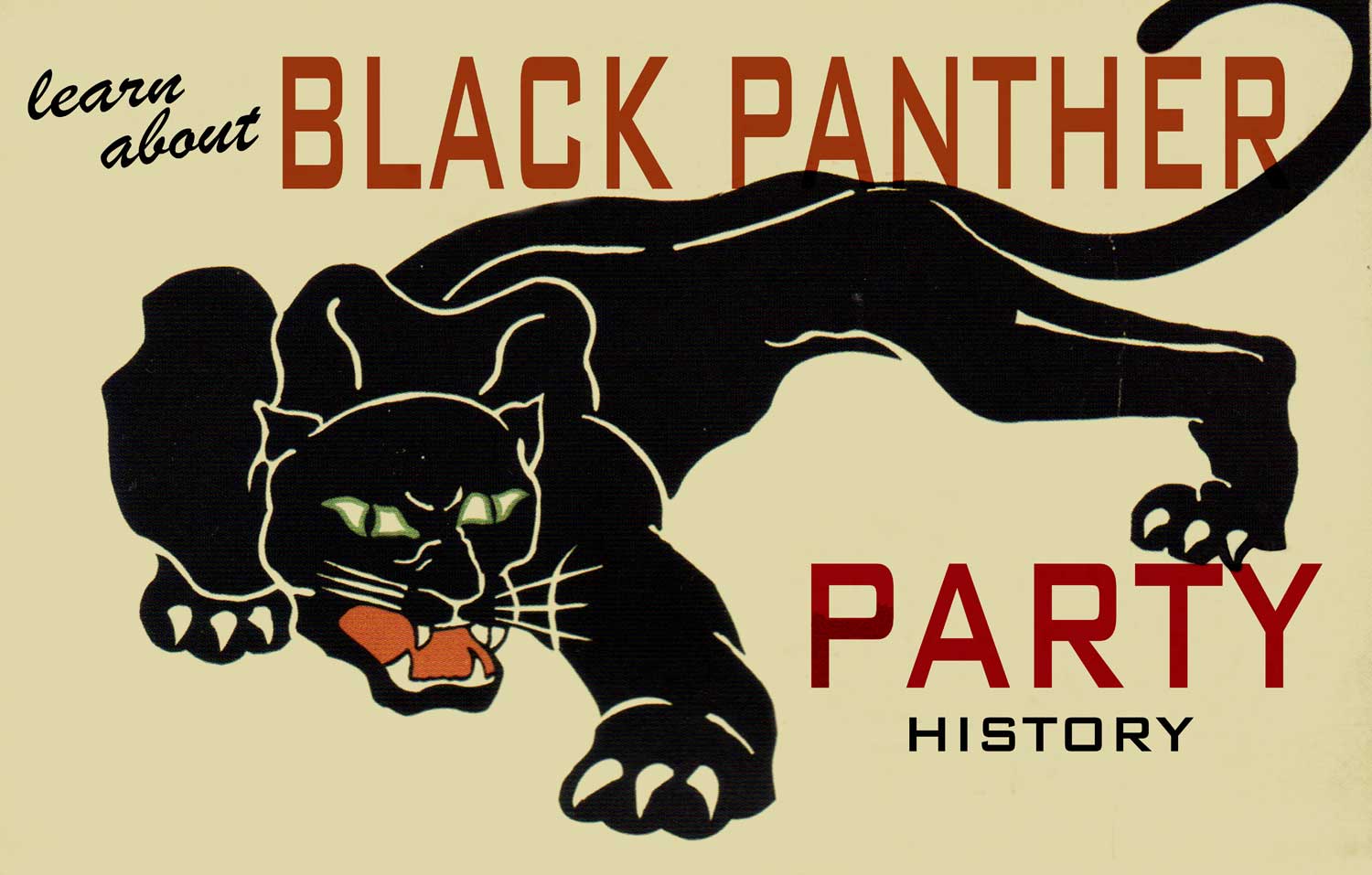
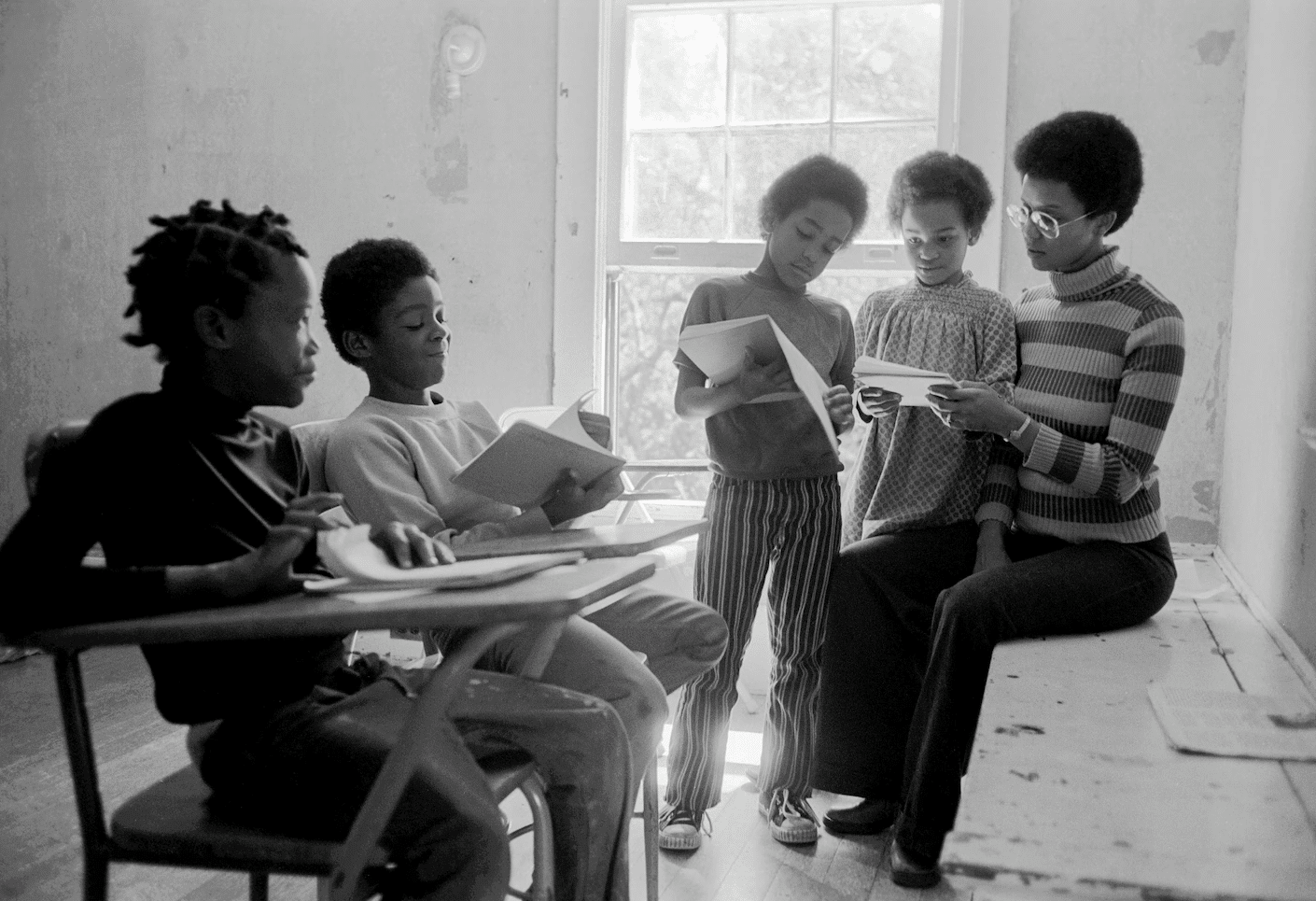
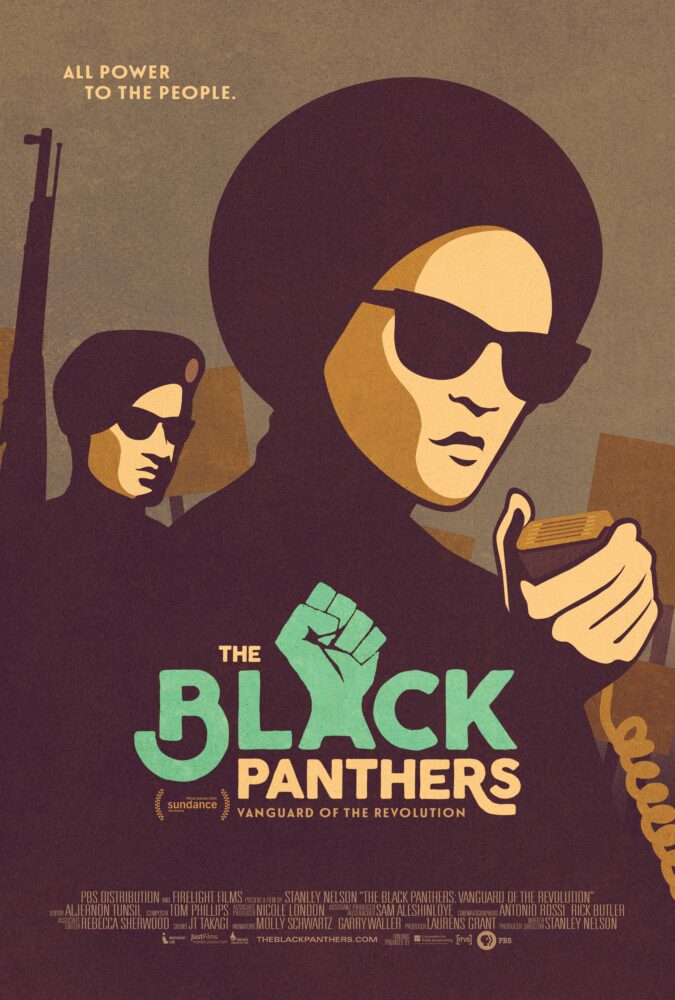
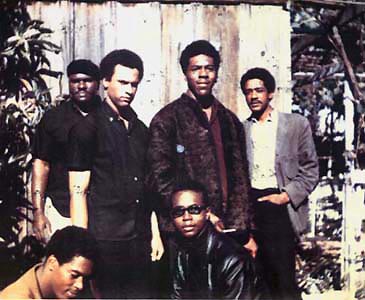
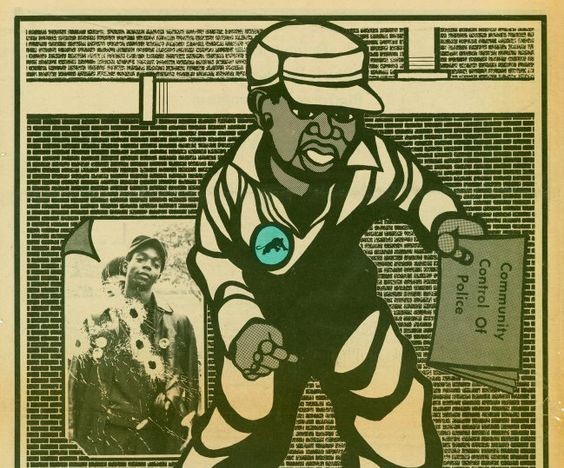






The video will be posted. However, we have a very small team and we are still working on it. Please check back in a few days. We will also email everyone who registered for the session once it is posted.
Perhaps I am just not seeing it but was told that the presentation video would be posted from this event. Can you help?